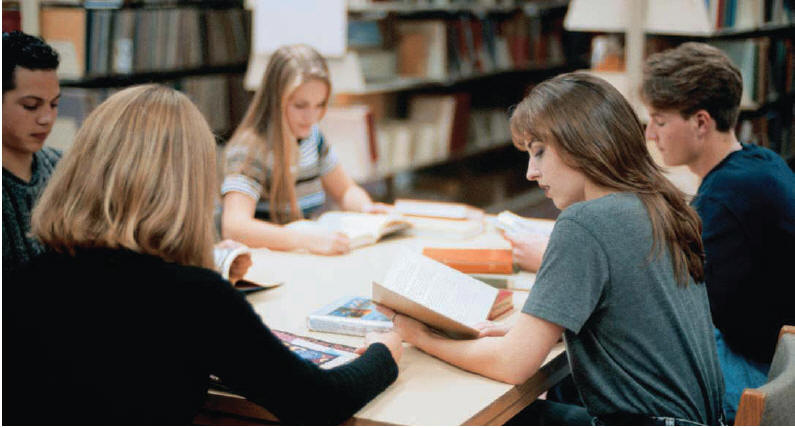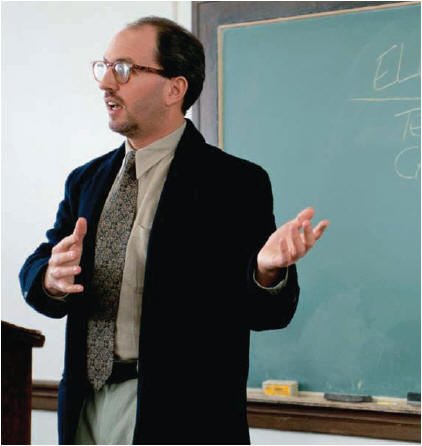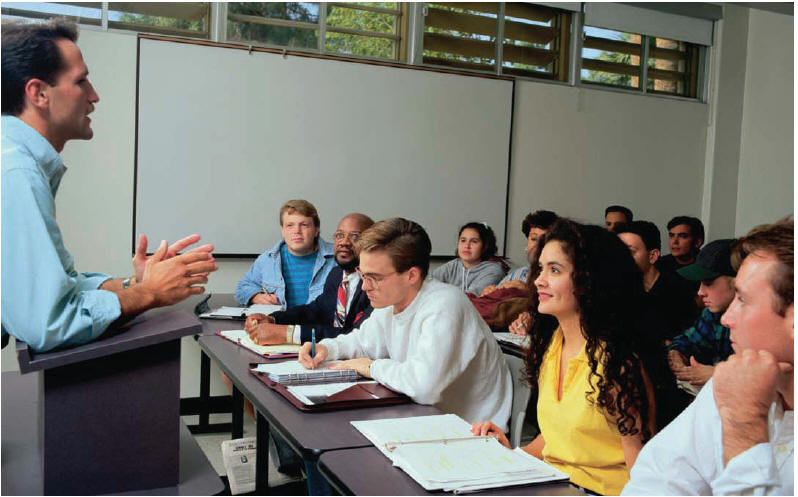Mathematics Standards
IV. Geometry
A. Successful students understand and
use both basic plane and solid
geometry. They:
A.1. know properties of similarity,
congruence and parallel lines
cut by a transversal.
A.2. know how to figure area and
perimeter of basic figures.
A.3. understand the ideas behind
simple geometric proofs and are
able to develop and write simple
geometric proofs (e.g., the
Pythagorean theorem; that there
are 180 degrees in a triangle;
and that the area of a triangle is
half the base times the height ).
A.4. solve problems involving
proofs through the use of
geometric constructions.
A.5. use similar triangles to find
unknown angle measurements
and lengths of sides.

A.6. visualize solids and surfaces in
three-dimensional space (e.g.,
recognize the shape of a box
based on a two-dimensional
representation of its surfaces; and
recognize the shape of a cone
based on a two-dimensional
representation of its surface).
A.7. know basic formulas for
volume and surface area for
three-dimensional objects.
B. Successful students know analytic
(i.e., coordinate) geometry. They:
B.1. know geometric properties of
lines (e.g., slope and midpoint
of a line segment).
B.2. know the formula for the
distance between two points .
B.3. solve mathematical and realworld
problems (e.g., ladders,
shadows and poles) that involve
the properties of special right
triangles with the Pythagorean
theorem and its converse.
B.4.* recognize geometric
translations and
transformations algebraically.
C. Successful students understand basic
relationships between geometry and
algebra. They:
C.1. know that geometric objects and
figures can also be described
algebraically (e.g., ax + by = c is
the standard form of a line).
C.2. know the algebra and geometry
of circles .
C.3.* know the algebra and geometry
of parabolas and ellipses as a
prerequisite to the study of
calculus.
C.4.* use trigonometry for examples
of the algebraic/geometric
relationship, including Law of
Sines /Cosines.

V. Mathematical Reasoning
A. Successful students know important
definitions, why definitions are
necessary and are able to use
mathematical reasoning to solve
problems. They:
A.1. use inductive reasoning in basic
arguments.
A.2. use deductive reasoning in basic
arguments.
A.3. use geometric and visual
reasoning.
A.4. use multiple representations
(e.g., analytic, numerical and
geometric ) to solve problems.
A.5. learn to solve multi-step
problems.
A.6. use a variety of strategies to
revise solution processes.
A.7. understand the uses of both
proof and counterexample in
problem solutions and are able
to conduct simple proofs.
A.8. are familiar with the process of
abstracting mathematical
models from word problems,
geometric problems and
applications and are able to
interpret solutions in the
context of these source
problems.
B. Successful students are able to work
with mathematical notation to solve
problems and to communicate
solutions. They:
B.1. translate simple statements into
equations (e.g., “Bill is twice as
old as John” is expressed by the
equation b =2j).
B.2. understand the role of written
symbols in representing
mathematical ideas and the
precise use of special symbols
of mathematics.
C. Successful students know a select list
of mathematical facts and know how
to build upon those facts (e.g.,
Pythagorean theorem; formulas for
perimeter, area, volume; and
quadratic formula).
D. Successful students know how to
estimate. They:
D.1. are able to convert between
decimal approximations and
fractions .
D.2. know when to use an
estimation or approximation in
place of an exact answer.
D.3. recognize the accuracy of an
estimation.
D.4. know how to make and use
estimations.
E. Successful students understand the
appropriate use as well as the
limitation of calculators. They:
E.1. recognize when the results
produced are unreasonable or
represent misinformation.
E.2.* use calculators for systematic
trial-and-error problem solving.
E.3.* plot useful graphs.
F. Successful students are able to
generalize and to go from specific to
abstract and back again. They:
F.1. determine the mathematical
concept from the context of an
external problem, solve the
problem and interpret the
mathematical solution in the
context of the problem.
F.2. know how to use specific
instances of general facts, as well
as how to look for general results
that extend particular results.
G. Successful students demonstrate
active participation in the process of
learning mathematics. They:
G.1. are willing to experiment with
problems that have multiple
solution methods.
G.2. demonstrate an understanding
of the mathematical ideas
behind the steps of a solution,
as well as the solution.
G.3. show an understanding of how
to modify patterns to obtain
different results.
G.4. show an understanding of how
to modify solution strategies to
obtain different results.
G.5. recognize when a proposed
solution does not work, analyze
why and use the analysis to
seek a valid solution.
H. Successful students recognize the
broad range of applications of
mathematical reasoning. They:
H.1. know that mathematical
applications are used in other
fields (e.g., carbon dating,
exponential growth ,
amortization tables,
predator/prey models, periodic
motion and the interactions of
waves).

H.2. know that mathematics has
played (and continues to
play) an important role in the
evolution of disciplines as
diverse as science,
engineering, music and
philosophy.
VI. Statistics**
A. Successful students apply concepts of
statistics and data analysis in the
social sciences and natural sciences.
They:
A.1. represent data in a variety of
ways (e.g., scatter plot, line
graph and two -way table) and
select the most appropriate.
A.2. understand and use statistical
summaries data (e.g., standard
deviation, range and mode).
A.3.* understand curve-fitting
techniques (e.g., median-fit line
and regression line) for various
applications (e.g., making
predictions).
** The majority of math participants
indicated that knowledge of statistics
is not necessarily a prerequisite for
success in most entry-level university
mathematics courses. However,
participants in other disciplines
identified knowledge of statistics as
important to success in some entrylevel
courses in the social sciences
(e.g., economics) and sciences (e.g.,
biology and ecology). Statistics is
being included within mathematics
for organizational convenience, but
should not be interpreted as
equivalent to the other five areas of
mathematical knowledge and skill for
university success in terms of its
importance in entry-level college
mathematics courses. Statistics
standards also appear in the natural
sciences and social sciences
| Prev | Next |